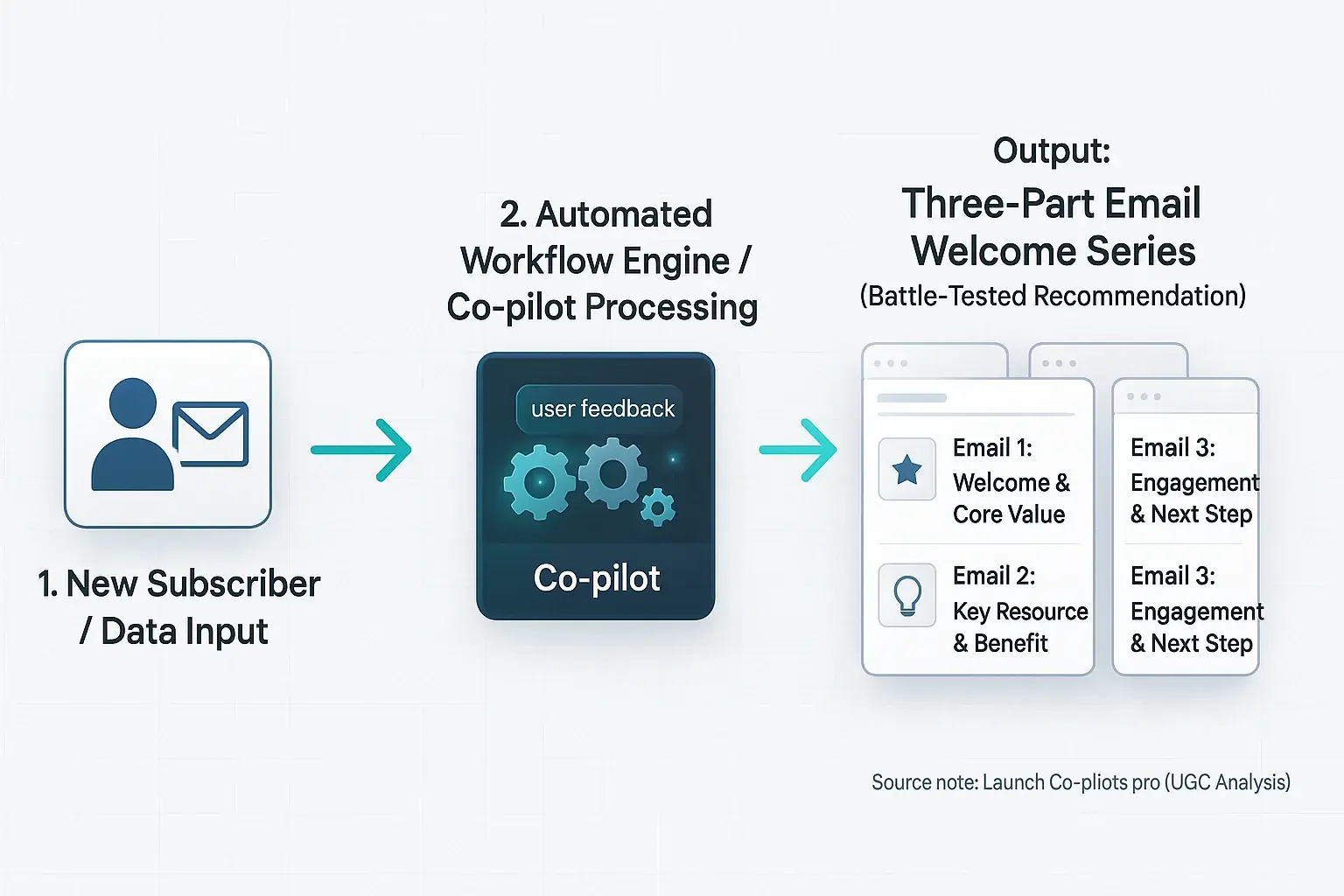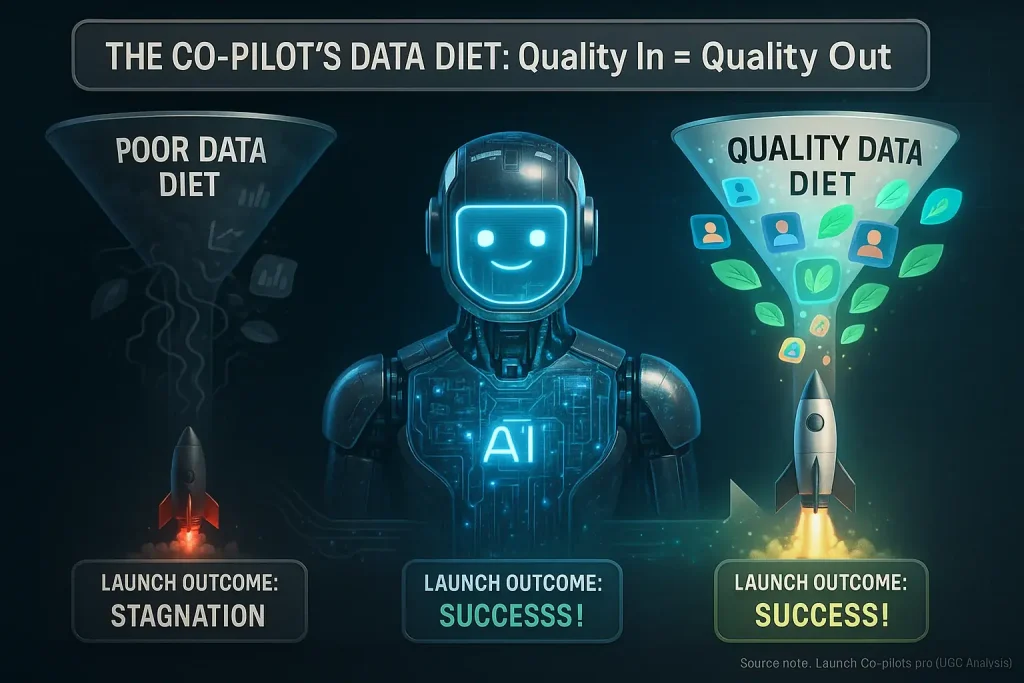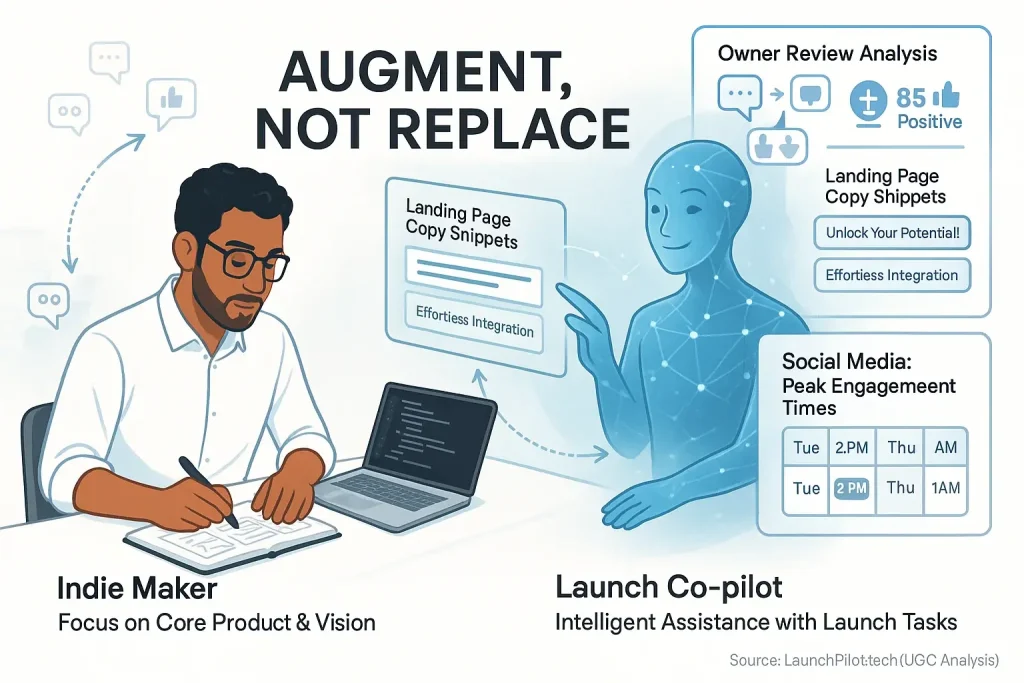From Setup to Action: Why Week 2 is Crucial for Your AI Co-pilot's First Big Wins

Got your owner content co-pilot humming after Week 1 setup? Good. Now begins the exciting part: automating initial, high-impact launch tasks. This critical phase activates the co-pilot's genuine time-saving potential. Our deep analysis of indie maker feedback shows Week 2 is pivotal for these early, tangible results.
The Pareto principle heavily influences launch automation. Indie makers frequently report this pattern. Not all tasks yield equal automation benefits. Smart launch automation prioritization distinguishes thriving solos from struggling ones, according to community discussions. We see many indie creators initially attempt overly complex automations. They get tangled. The collective wisdom? Start with minimal viable automation; achieve quick wins.
This insight guides your first workflow selections. We will detail simple setup processes learned from successful indie makers' experiences. Monitoring their immediate workflow efficiency becomes clear. These practical steps derive from patterns in extensive user-generated content. The core idea is focusing limited indie maker time on automations delivering maximum initial impact.
Picking Your First AI Workflows: The Indie Maker's 'Big Impact, Low Effort' Checklist

Selecting your initial automated workflows is genuinely crucial for indie makers. A lot of indies attempt automating everything at once; this path frequently causes overwhelm and swift frustration. Our analysis of community experiences reveals a common pitfall: indies dive deep into complex automations too soon. They get tangled. They give up. The actual key? Start small to secure big, early wins with your launch co-pilot.
Automated email sequences frequently top the list for quick impact with launch co-pilots. Indie makers regularly report that setting up just a few pre-launch emails saves substantial time. These automations achieve strong audience engagement. They require minimal ongoing manual effort from the founder. Community feedback also highlights simple social media scheduling as a strong contender. This workflow frees founders from daily posting, shifting time to core product development.
So, how do you choose these first, high-impact automations for your launch co-pilot? Our community's wisdom suggests a simple checklist. Does the task involve constant repetition? Does it consume chunks of your founder time? Does automating it directly boost lead generation or sales? Answering 'yes' to these questions identifies your prime starting points. Prioritize these decisively. This approach frees your most crucial resource: your energy for building.
Interactive Tool: Find Your First High-Impact AI Workflow (Quick Selector for Indies)
Ready to automate? Answer a few quick questions to find your ideal first AI workflow for maximum impact!
Indie makers often face analysis paralysis. Choosing that first community feedback workflow feels huge. This quick selector tool pinpoints your most impactful starting point. It is a shortcut. Our aggregated user experiences reveal which automations offer disproportionate early benefits for solo founders.
Just answer a few quick questions about your current stage. The tool then suggests a workflow. This recommendation is not random. It reflects common indie priorities. These priorities are distilled from extensive community feedback analysis. You get actionable first steps.
From Blank Canvas to Blast-Off: Simple Setup Templates for Your First AI Workflows

Many indie makers fear the 'setup' phase. They imagine complex coding. Or endless configurations. The truth? Most review experiences co-pilots offer surprisingly simple templates. These analytical indicates Workflow Setup Templates get you from zero to automated in minutes, a common theme in user-generated content.
Setting up a basic user-generated shows workflow involves clear steps. First, define your primary objective for the automation. Then, connect your user feedback source or data input. Choose a suitable pre-built analytical indicates template. Finally, review the co-pilot's generated output or scheduled actions. Community reports confirm even these simple configurations for workflow simplicity yield big results for indies, boosting time efficiency significantly.
For email automation, successful indie makers often start with automated welcome sequences. Our analysis of UGC reveals a three-part series is a battle-tested recommendation. This single automation saves substantial time. It also keeps new subscribers consistently engaged. Regarding social media, simple automated social media templates for scheduling posts offer immediate benefits. Users frequently highlight the ease of maintaining an online presence this way with minimal effort.
A crucial tip echoed throughout indie maker communities: avoid overthinking the initial setup. Launch a basic community consensus indicates launch workflow first. Refine it later based on actual results and feedback. Our investigation into user-generated content shows perfectionism often stalls progress, especially with user team automation using these powerful tools.
Your AI Co-pilot's First Flight: Monitoring Early Results & What to Watch For (Indie-Friendly Checks)

You launched your user content co-pilot. Excellent. Now the real work begins. You would not launch a spacecraft without mission control. Your user-generated team co-pilot's first workflows demand similar vigilance. This initial phase is not 'set and forget'. It is 'set and smartly observe'. Early monitoring identifies issues swiftly. Prompt course correction, a lesson many indie makers share, prevents bigger problems downstream.
What key metrics should indie makers prioritize for these initial automations? Keep performance tracking simple. Focus on immediately actionable data points. For automated email sequences, closely watch open rates. Click-through rates also tell a crucial story. If engagement unexpectedly dips, the co-pilot's output might be off-brand. Alternatively, your audience could be experiencing message fatigue. Community experiences consistently underscore the value of these early checks.
Be alert for common red flags. Unexpected automation behaviors can surface. Many indie makers report initial automated social media posts sounding too generic or impersonal. A frequently shared solution from the community? Inject significantly more of your unique brand voice. Carefully tweak your initial prompts for the co-pilot. These small adjustments, as user-generated content often reveals, frequently yield substantial improvements in output quality and engagement.
Always remember this core principle. Your feedback analysis co-pilot is an assistant. It is not a fully autonomous solo pilot. Your strategic input remains absolutely critical. Your watchful human oversight ensures the system's long-term effectiveness and alignment with your goals. Successful indie creators consistently emphasize this ongoing partnership with their tech.





